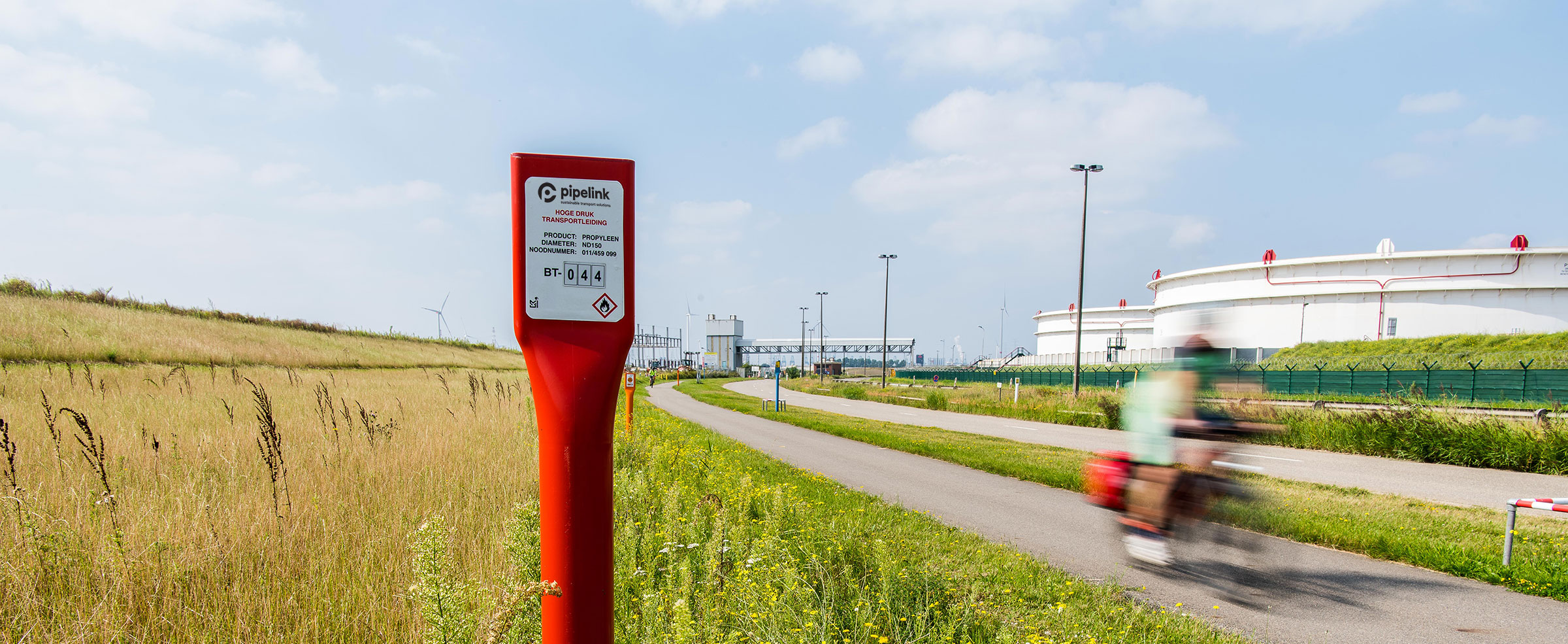Pipelink for Antwerp@C project
Pipelink's role in a shared CO₂ infrastructure in the port of Antwerp How can you halve the port of Antwerp's CO₂ emissions? And how do you achieve this by 2030? Eight companies of the Antwerp energy and chemicals cluster are working on answering these questions as part of the Antwerp@C project. Their goal is to create the world's largest multi-modal cross-border open-access CO₂ infrastructure. As a subsidiary of Port of Antwerp-Bruges, Pipelink is taking on a key role in this. Major port project for CO₂ Antwerp@C is an initiative of Air Liquide, BASF, Borealis, ExxonMobil, INEOS, TotalEnergies, Fluxys, and Port of Antwerp. Together, these parties are working to achieve a smooth transition for Port of Antwerp-Bruges to a carbon-neutral port. The focus of this consortium is on Carbon Capture Utilisation and Storage (CCUS), which involves offshore storage and the future re-use of CO₂ as a raw material for the chemicals industry. The project consists of: a backbone CO₂ pipeline covering both the left and right bank of the river Scheldt an export pipeline crossing the border into the Netherlands a liquefaction unit to liquefy CO₂ with temporary storage The technical and feasibility studies – subsidised by the Connecting Europe Facility (CEF) fund – have already been completed. The engineering phase (FEED) began recently and will run until late 2022. By this point, a final investment decision will be made for the first phase of the project. Pipelink's role in CCUS In the meantime, Fluxys, Air Liquide, and Pipelink (a subsidiary of Port of Antwerp-Bruges) have mapped out initial demand for the proposed CO₂ infrastructure via an 'Open Season', in which all firms in the large port area of Antwerp were invited to express their interest in CO₂ transport and/or CO₂ terminal infrastructure in Antwerp. The results of this survey will be taken into account in the final investment decision. Green light for Kairos@C A number of projects will be connecting to the CO₂ backbone of Antwerp@C. One of these is the Kairos@C project of consortium members Air Liquide and BASF Antwerp, which is to reduce the CO₂ emissions of both firms by a total of 14.2 million metric tonnes over a ten-year period. The Kairos@C project was given the go-ahead from the EU Innovation Fund at the end of 2021. This means another milestone towards a carbon-neutral port is in sight. Interested in CO₂ transport and/or CO₂ terminal infrastructure in Antwerp? Contact Pipelink. Press release Port of Antwerp: Antwerp@C

